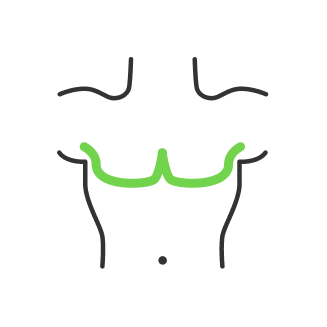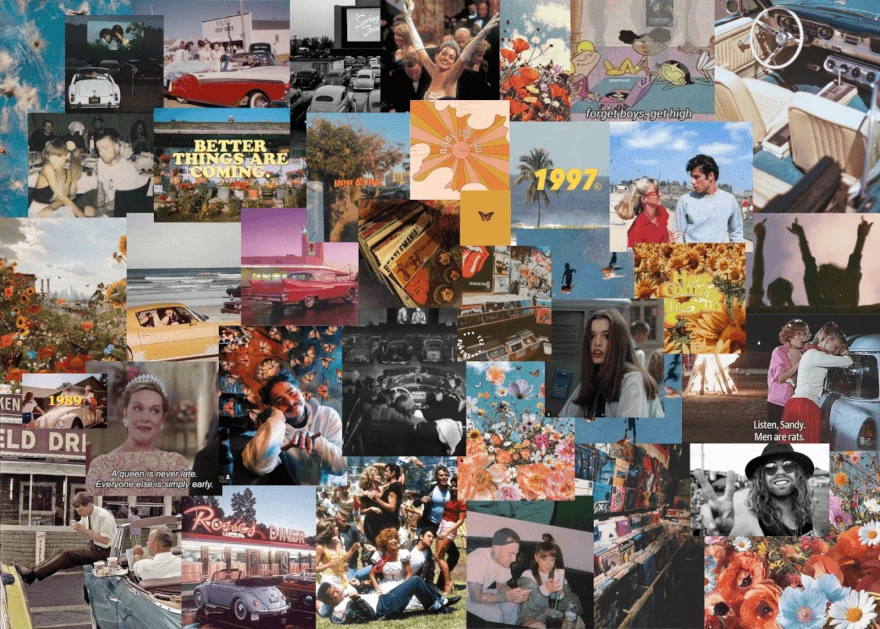What is infrared photography: definition, techniques, tips

- How to shoot infrared photography?
- Modify your cam following the infrared photography tutorial
- Use a low ISO trying infrared photography techniques
- How to do infrared photography instead of black and white one?
- How to infrared photography?
- What is an infrared photography lens?
- Learn DSLR infrared photography tips
- Get filters for the best infrared photography definition
- Use an infrared photography app for a smartphone
- Work with the lens flare during an infrared photography processing

A person is an amazing creature, which always wants to do what it would seem impossible to do: fly, swim underwater, hear what the human ear does not hear, see what is not accessible to our eyes. Various technical means come to our aid in this complex matter. If you are already bored with a portrait, minimalism, and other trends in art, it's time to get acquainted with such a term as infrared photography.
The human eye is able to perceive rays in the wavelength range from 380 nm to 760 nm (from violet to red). Everything that goes beyond these limits can no longer be seen with the nude eye. Infrared filter photography is capable of capturing wavelengths ranging from 700 to 1100 nm.
Surreal pictures are so unusual that it is simply impossible to remain indifferent. With one button click, you obtain a green hot summer, which turns into winter.The grass and leaves turn white, the sky and water turn dark. Everything that is inaccessible to the eye has become visible and from this even more attractive. IR photo is a rather complicated process and it is pointless to start without theoretical training.

How to shoot infrared photography?
Not every digital device can be called an infrared photography camera. The fact is that the photosensor of any camera is protected by a built-in filter that blocks IR rays. This was done specifically to improve the image quality in the visible spectrum. In order to check whether you have infrared photography software, you need to conduct a simple method: take a remote control, for example, from a TV (the main thing is that it is working), point it at the camera lens, press the button on the remote control and watch what is happening on the screen of your camera. If you see that the IR diode on the remote control is on (pink or bluish glow), then IR is possible. On DSLR cameras, you can check as follows: put the camera on a tripod, set a long shutter speed, for example, ten sec, set the auto release, having previously focused on the remote control, and run to the remote control. Press any button for 10 seconds and see the result. If there is a bright dot from the IR diode in the frame, then everything is fine, if not, you can increase the shutter speed and open the aperture wider. The test is best done in a room with less light possible.

Modify your cam following the infrared photography tutorial
If the capabilities of a conventional camera with a filter seem insufficient and you want to take infrared photos with short exposures, you can remove the Hot Mirror filter from the camera and get a camera with a fairly high sensitivity to the IR range. In normal visible light, the camera will stop working normally. Colors will be constantly distorted, and this can only be dealt with by installing the Hot Mirror filter already on the lens. Therefore, for shooting in the IR range, an old camera is often used.
Since the interference in the camera has already begun, then you can put the infrared filter directly in front of the matrix. The advantages of this solution are that in the viewfinder again the picture is visible, and there is no need to put an infrared filter in front of the lens. And since you don't need a filter, you can use lenses with different filter thread diameters.
At home, it is theoretically possible to change the filter in front of the matrix, but in practice, it is more profitable to give the camera to a specialist for revision. The result will be much better, and the camera will not be broken.

Use a low ISO trying infrared photography techniques
Choose a composition and focus on the object of interest. However, this can be difficult, since screwing the filter onto the lens, you will not see anything in the viewfinder (the filter blocks visible rays). There is a way out: remove the filter, focus on the subject, turn off autofocus, screw on the filter, and shoot.
Since the automation is tailored to work in the visible range, IR radiation will have to experimentally make adjustments for focusing and exposure. It is better to take pictures, of course, in RAW format, since the automation will not be able to determine the white balance correctly.

How to do infrared photography instead of black and white one?
Filters that make color photography look like infrared are quite popular on the Internet. However, they cannot work correctly, because the colour picture does not contain information about the reflectivity of textures in the IR spectrum. Roughly speaking, they cannot distinguish between a green car and green foliage and make all green objects white. Likewise, everything blue becomes black. In the same way, digital infrared photography cannot be obtained with a simple red filter, no matter whether film or digital.

How to infrared photography?
In order to obtain a real IR image, it is necessary, in the simplest case, not to let visible radiation into the lens so that the residual sensitivity of the camera to radiation forms an image. While most infrared photographers prefer to shoot in bright sunlight, cloudy weather can offer very good photos. Also, spectacular photographs of the sky are obtained in calm weather, when the sky is covered with light cirrus clouds. The clouds, almost indistinguishable in ordinary light, stand out sharply in IR photographs against the background of the dark sky.
Ultimately, as with classic photography in general, there are no rules. The main thing is to try. Shoot at noon and dusk, with sun and rain. The great thing about IR pictures is that the results are often impossible to predict in advance. For a panoramic photo of the waterfall, it can take 15 shots, 40 seconds each. With refocusing and framing, it takes over 25 minutes.
In the case of film option, it is better to prepare and use special films Kodak High Speed Infrared HIE, Konica Infrared 750, and the most popular, Ilford SFX 200. But keep in mind that the film is not enough. You will still need to install a filter that cuts out visible light. Otherwise, the film turns into a regular black-and-white monochrome film with the increased grain. After exposure, the film must be developed using the classic black-and-white process in night darkness and preferably in a metal tank.

What is an infrared photography lens?
One light filter is not enough for shooting. You need something else to form the image. The difficulty of IR photography is that the lens will be used in an abnormal application. The wavelength of light is slight, which means that the refraction of light will be less.
If the lens is aimed at infinity in visible light, then in the IR it will appear slightly closer. The front focus appears. With modern lenses, this mark is quite rare, and with zoom lenses, its position depends on the focal length. Work around the problem either by using Live View and aiming at the contrast or focusing manually by controlling the sharpness on the screen. If the camera does not have Live View, then you can simply diaphragm the lens harder and thereby hide the focusing error in the depth of field.

Learn DSLR infrared photography tips
In most popular digital cameras, the sensor has a residual sensitivity to the IR range sufficient to photograph a bright frame with a shutter speed of several seconds. Despite the fact that the matrix of a digital camera is sensitive to IR radiation, its sensitivity to visible light is thousands of times greater, therefore, in order to take an IR picture, it is necessary to block the visible light with a special filter.
Matrices of all digital cameras are sensitive to infrared light, but the point is in the so-called Hot-mirror filter that blocks infrared light. Canon DSLR cameras are equipped with a very effective Hot-mirror filter, so owners of these cameras must be prepared for very long exposures, the same applies to owners of Nikon D200, whose anti-IR filter is much stronger than the D70 or D50. Under shooting conditions that require only 1 second exposure on the Nikon D70, the D200 or Canon 20D will require a shutter speed of 30 seconds. Owners of Olympus DSLRs will also have to shoot at slow shutter speeds with IR shooting on the E-500, the exposure increases by eleven stops compared to visible light, while for the C-2000Z this difference is 7 stops, that is, the shutter speed is 16 times less.

Get filters for the best infrared photography definition
IR shooting almost always requires the use of an IR passing filter. Filters that block visible light, but are transparent to IR radiation. And in this matter, the simplest assistant is a photographic film: the developed color film is transparent in the infrared range. This means that the exposed and developed negative or simply developed slide film will turn out to be black in the visible range, but transparent in the IR.
By the way, it is the IR transparency of the film that is used by film scanners with automatic dust removal. They take an additional photo in the IR range, the dust remains visible against the background of a transparent film.
Search for black CD-R discs. They were popular for recording music, but recently, with the decline in popularity of CDs, they have become difficult to find. If you wash off the cover from such a disc, you get a black disc, transparent in the IR range.

Use an infrared photography app for a smartphone
The composition of the picture must be built before making a shot. IR image is characterized by very slow shutter speeds (approximately ten or twelve stops slower than normal photography). This is due to two reasons. First, the reason for the long exposures is the limited range of IR radiation perceived by the camera.
Secondly, when shooting in the IR range, you have to tightly clamp the aperture (f8 to f32) to eliminate focusing errors, since the camera's autofocus is set to aim in the visible range. All these complex settings are included in smart applications available on almost all modern smartphones. With only one click it is possible to get every image converted into an IR picture with no heavy Photoshop or Lightroom editing.The resulting frames will have red or purple tones, depending on the app setting. To get a classic black and white IR image, you will need to desaturate the image, for example, using a gradient map, having previously adjusted the levels and contrast. There are also several ways to get very effective color IR photographs. For example, you can use the Channel Mixer tool, setting first for the red channel Red 0%, Blue 100%, for blue-red 100%, Blue 0%, and then by small manipulations with the percentage of a particular color in channels, select the values at which the picture will look the most attractive.

Work with the lens flare during an infrared photography processing
Most lenses are not designed for IR photography. Therefore, blackening of the interior surfaces, anti-reflection protection, and placement of drives inside the lens can lead to severe reflections when direct sunlight enters the lens. You have to use deep hoods, shoot from the shadows, or take several shots with different positions of the highlights and collect mosaic panoramas from them.
The only solution is a camera with a lens set at a hyperfocal distance (camera without autofocus). Its sharpness zone goes forward, and there is simply nothing to correct the focus with. But such cameras are practically impossible to find online. They can only be found as an infrared photography iPhone or as a front camera on tablets.
In conclusion, it is good to note the main advantages of IR photography: the absence of haze in the pictures and always a well-developed sky, the absence of noise, since it does not reflect infrared rays. And, of course, the most important thing is the ability to see the unusual, a non-everyday world in addition to fabulous color, all moving people disappear or turn into "ghosts". Simple landscapes without a flash turn into magic locations. And it does not matter if you prefer macro or aerial photography, this new approach will open new horizons and posts in social media.
He started his career as a professional photo designer and retoucher. Professional commercial photographer with 20 years of experience. He is a leading advertising photographer and has worked as a food photographer with Michelin-starred chefs. His work with models can be seen on the calendars of many leading companies in Ukraine. He was the owner of the photo studio and photo school "Happy Duck".

with RetouchMe














